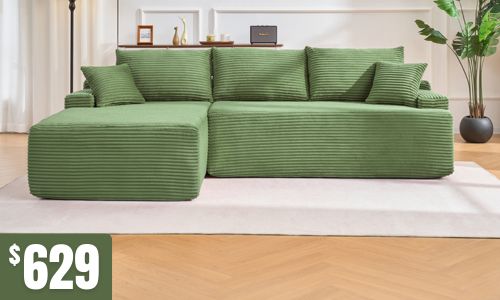Posts tagged with 'furniture design'

Furniture design is an art that goes beyond mere functionality. It is an intricate dance between aesthetics, utility, and psychology. The shapes and forms of furniture have a profound impact on our emotions and well-being, shaping our experiences within a space. In this article, we delve into the fascinating realm of the psychology of furniture design, exploring how different shapes and forms can influence our emotions and create meaningful connections with our surroundings.
The Power of Shapes
Shapes play a crucial role in influencing our emotions and perceptions. In furniture design, various shapes can evoke different feelings and responses. For instance:
- Curves and Soft Edges: Furniture with curvilinear forms and soft edges often elicits feelings of comfort, warmth, and relaxation. These shapes are reminiscent of natural forms and human bodies, creating an inviting and soothing atmosphere.
- Rectangles and Straight Lines: Furniture featuring clean lines and geometric shapes exudes a sense of order, stability, and professionalism. Rectangular forms are often associated with efficiency and precision, making them suitable for office and workspace design.
- Organic and Irregular Shapes: Furniture with irregular or asymmetrical forms can spark creativity and intrigue. Such designs can break away from conventional norms, encouraging a sense of uniqueness and exploration.
Forms that Evoke Emotions
Beyond shapes, the overall forms of furniture pieces can also elicit specific emotional responses:
- Cocooning and Nesting: Furniture designs that envelop the user, such as lounge chairs with high backs or canopy beds, create a feeling of security and privacy. These forms are reminiscent of shelter and protection, appealing to our primal instincts.
- Open and Airy: Furniture that employs open forms, such as open-back shelving units or minimalist coffee tables, promotes a sense of spaciousness and freedom. These designs can reduce feelings of clutter and confinement, contributing to a more relaxed environment.
- Dynamic and Movement: Furniture designs that incorporate elements of movement, such as swivel chairs or rocking chairs, encourage a sense of playfulness and engagement. These forms can stimulate our senses and foster a lively atmosphere.
Colour and Material Influences
While shapes and forms are paramount, colour and material choices in furniture design further enhance the emotional impact. Cool tones like blues and greens can evoke a sense of tranquillity, while warm tones like reds and yellows can infuse energy and positivity. Similarly, materials like natural wood can bring warmth and authenticity, while metals and glass can create a modern and sophisticated ambiance.
Cultural and Contextual Considerations
The psychology of furniture design is not limited to universal responses; cultural and contextual factors also play a significant role. Different cultures associate various shapes and forms with distinct meanings. Additionally, the purpose of the space and the intended user experience should be considered when designing furniture that resonates emotionally.
In the world of furniture design, shapes and forms are more than aesthetic choices; they are powerful tools that shape our emotions and experiences. Whether it's the cosy embrace of a curved sofa, the structured efficiency of a rectangular desk, or the playful movement of a swivel chair, each design decision influences our well-being and how we connect with the spaces we inhabit. By understanding the psychology behind furniture design, we can create environments that not only serve a functional purpose but also enrich our lives on a deeper, emotional level.

In the realm of interior design, creating a visually appealing living space is just one part of the equation. The true essence of a well-designed home lies in its ability to promote comfort, well-being, and productivity. Enter the world of ergonomics – the study of designing furniture and spaces to fit the needs of human users. In this article, we will explore the psychology of ergonomics and how it plays a pivotal role in crafting furniture that not only looks good but also feels right.
Understanding Ergonomics:
Ergonomics is a multidisciplinary science that seeks to enhance the interaction between people and their environment, aiming to optimise human performance and well-being. When applied to furniture design, ergonomics takes into account various factors, such as body posture, physical comfort, and cognitive capabilities, to create products that promote better health and efficiency.
The Impact on Comfort:
Comfort is a fundamental aspect of furniture design. We've all experienced the discomfort of sitting in a poorly designed chair for an extended period. Ergonomics addresses this by designing furniture with the human body in mind. Chairs with proper lumbar support, for instance, promote good posture and reduce the risk of back pain. Additionally, cushions with the right density and materials can ensure even weight distribution, preventing pressure points and discomfort.
Enhancing Well-being:
Furniture profoundly impacts our emotional and psychological well-being. Have you ever noticed how certain spaces feel inviting and calming, while others feel chaotic and unsettling? Ergonomics plays a significant role in creating the former. When furniture is designed with consideration for human psychology, it can evoke positive emotions and contribute to a sense of comfort and security.
For example, rounded edges on furniture pieces are known to create a feeling of warmth and approachability. Soft, natural materials can evoke a sense of connection to nature, promoting a tranquil atmosphere. On the other hand, sharp edges and uncomfortable surfaces can subconsciously induce stress and anxiety.
Boosting Productivity:
Ergonomic furniture can also have a substantial impact on productivity. In workspaces, well-designed ergonomic chairs and desks can improve focus, reduce fatigue, and increase overall efficiency. Adjustable height desks, which allow users to switch between sitting and standing positions, have gained popularity due to their positive impact on both physical health and cognitive function.
Moreover, ergonomic furniture can help prevent work-related musculoskeletal disorders, such as carpal tunnel syndrome and neck strain, enabling individuals to work comfortably and effectively for more extended periods.
The User-Centric Approach:
At the heart of ergonomics lies the user-centric approach. Furniture designers and manufacturers take into account the diverse needs and abilities of people to create products that cater to a wide range of users. This approach involves conducting research, gathering user feedback, and testing prototypes to ensure that the final designs meet the requirements of the intended audience.
Incorporating the principles of ergonomics into furniture design is more than just a passing trend; it's a philosophy that can significantly enhance the way we live and work. By focusing on comfort, well-being, and productivity, ergonomic furniture aligns with the inherent human desire for spaces that nurture and support our physical and emotional needs.
The next time you choose furniture for your home or workspace, consider the psychological impact of your choices. Investing in ergonomic pieces not only improves the aesthetics of your living space but also contributes to a healthier, happier, and more productive lifestyle. So, let ergonomics be your guide on the journey to a harmonious and comfortable living environment.




.jpeg)

 (3).jpeg)
